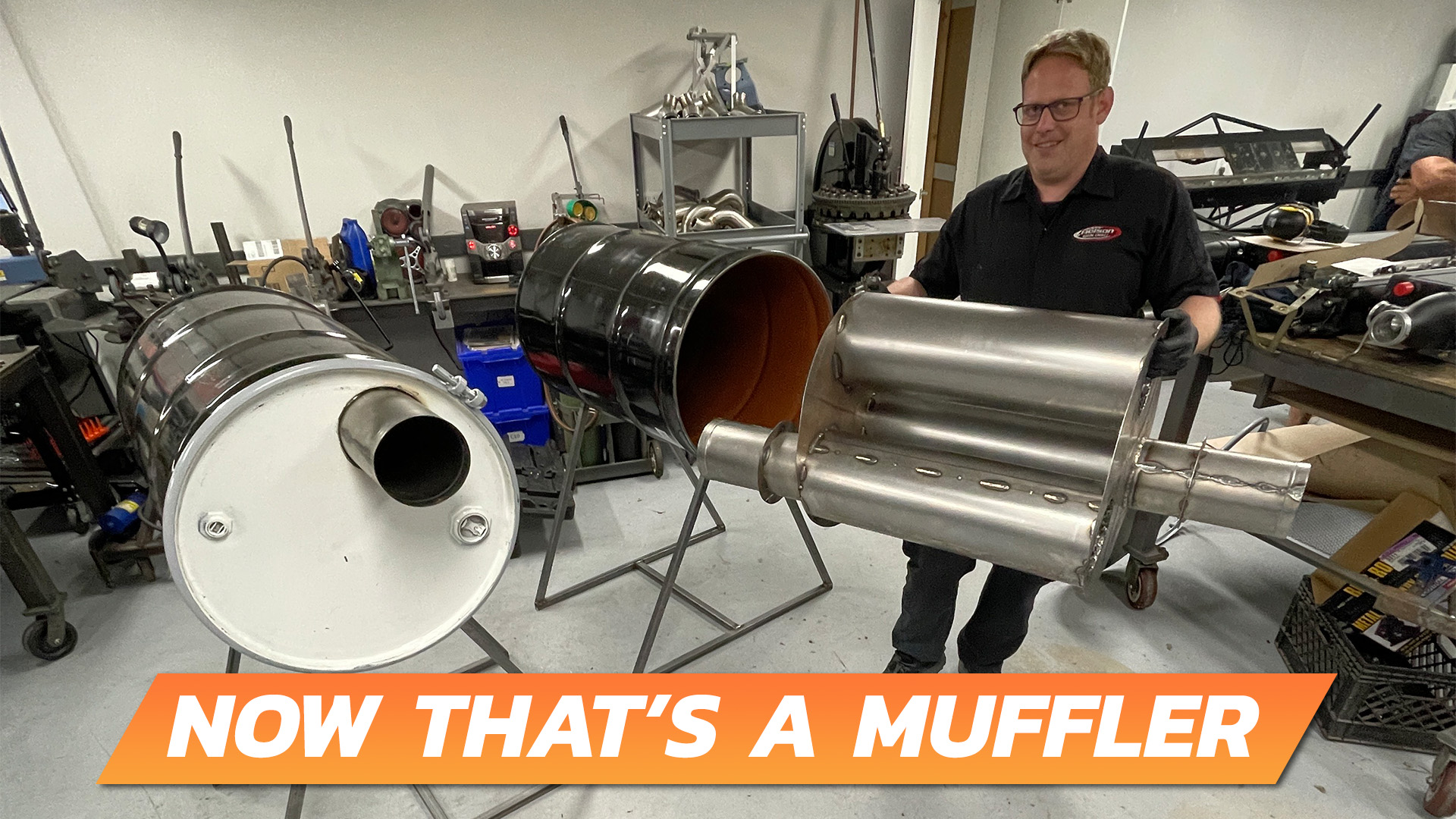
Nelson Racing Engines

Nelson Racing Engines
Y’know, I’ve watched hundreds of engine dyno videos over the years and I’ve never once thought about how it sounds from the outside. It’s great for car geeks like you and me to hear a twin-turbo V8 ripping through our phone speakers, but it’s probably another for a speed shop’s neighbors—especially if they’re doing 10 or more pulls a day. Nelson Racing Engines reckoned it was time to address that, so they made their own dyno mufflers. Plainly put, they’re enormous, and kind of genius.
You can tell from the photos here that they’re housed in 55-gallon drums. They aren’t hollowed out like some clapped Chevy truck trying to pass a visual inspection, though. Inside, you’ll find six-inch perforated tubing to baffle the noise. The exhaust goes in and then runs through three sections in an attempt to really capture the sound before it travels out into the atmosphere of LA’s Chatsworth neighborhood.




Tom Nelson, owner of NRE, tells me the design is similar to the Magnaflow exhausts they install on their hot rods. That’s why they’re calling them Magnacans, which seems fitting. Talking about the barrels, he says, “They have a nice flanged lid that is removable so if we need to service these, we can. Then we made some stands from mild steel.”
“We packed the perforated pipe with Rockwool, which is an insulation made from rock and has a 2,200 [degree] temperature rating,” Nelson added.
The mufflers are stationed on the building’s roof. Nelson tells me they were designed to reduce back pressure and hopefully minimize any horsepower losses. Some A/B testing is in the plans to see how much power is robbed, if any.

In any case, the ginormous cans seem to be working. “They massively reduce engine noise to make it easier on our neighbors,” Nelson added. I imagine they’re grateful for that. NRE’s wildly powerful and beautifully arranged engine setups are best admired up close, whether it’s a thumping 632-cubic-inch Chevy making 2,500 hp or a masterful twin-turbo Lamborghini V12. If only they had these when that 427 V8 went kaboom at 8,000 rpm a few months back.
Got a tip or question for the author? Contact them directly: caleb@thedrive.com